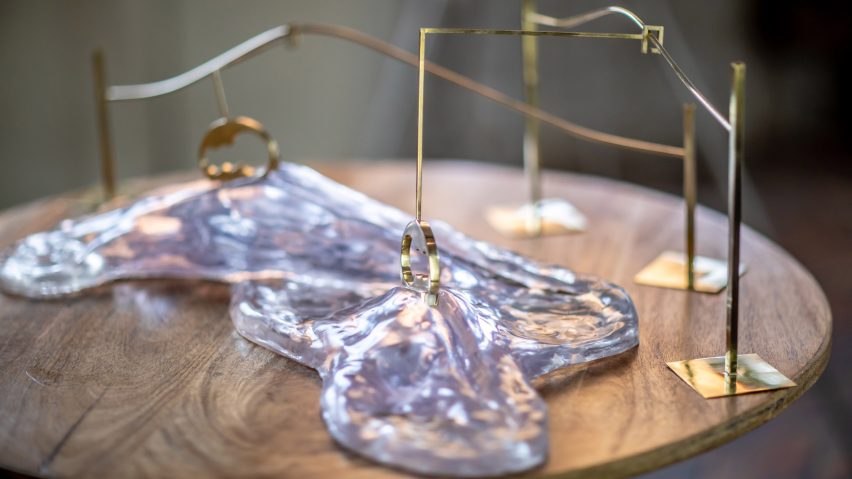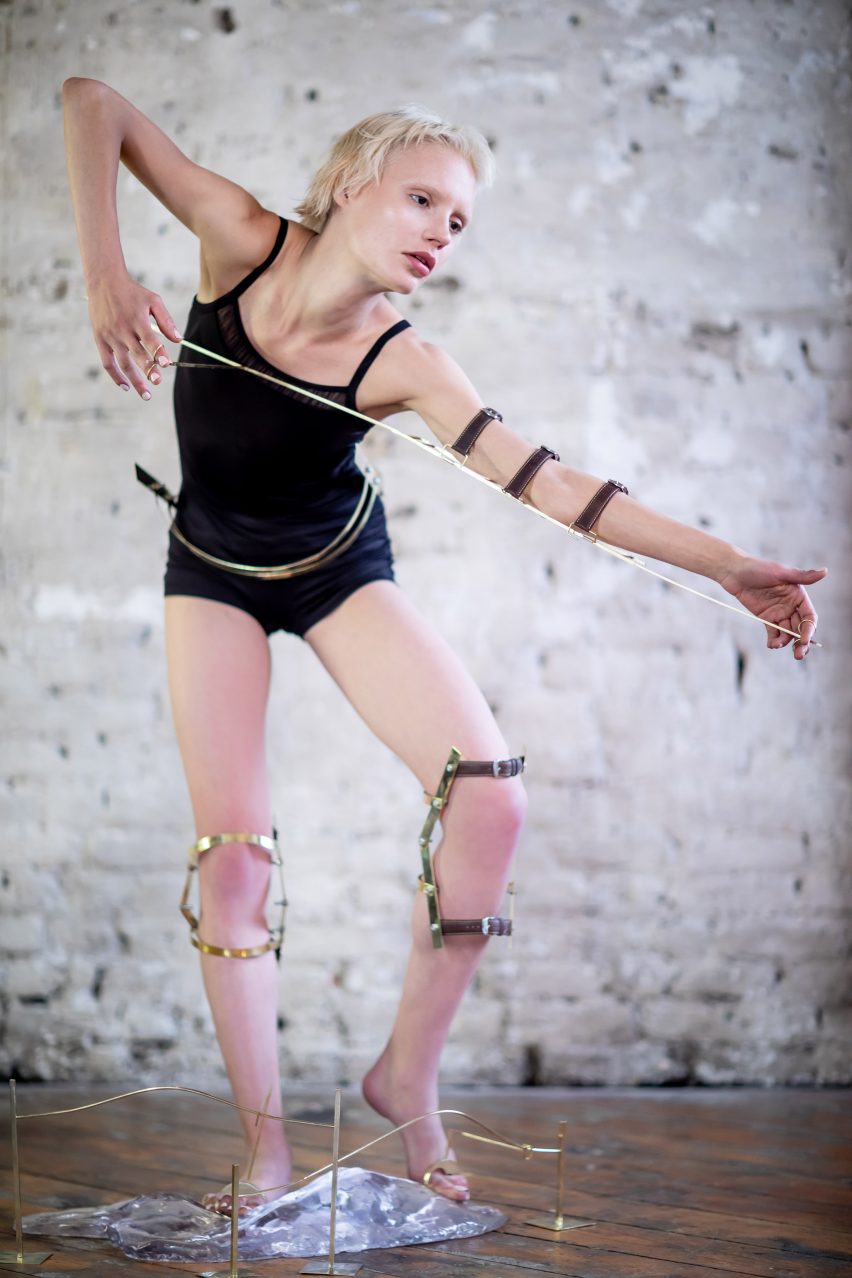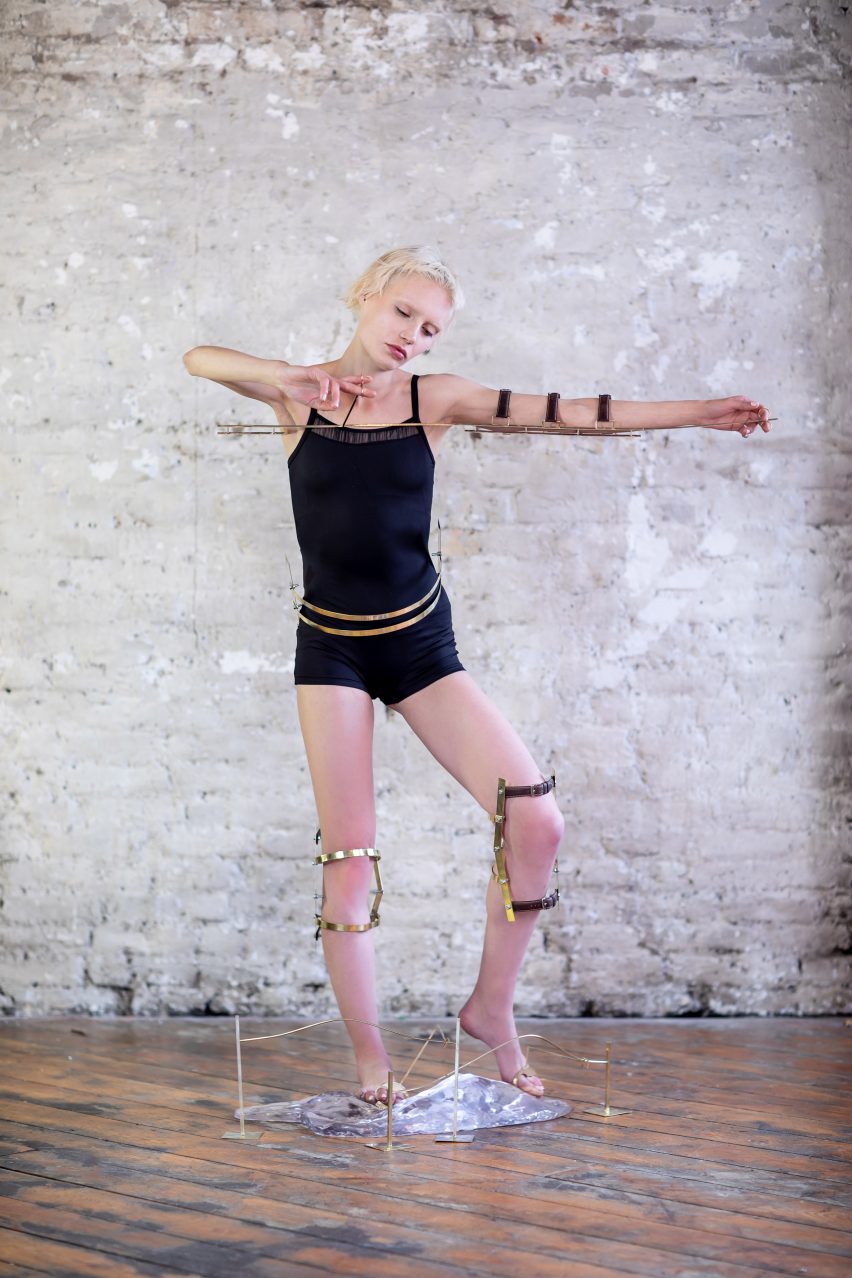
Ching-Hui Yang creates dance training device that imitates muscle memory
Central Saint Martins graduate Ching-Hui Yang has created a series of brass tools that aim to encourage muscle memory to help train dancers.
Yang, who studied on the Material Futures masters course, worked with professional dancer Valerie Ebuwa to create the training device that locks an individual's posture in place to help form a perfect pas de bouree ballet movement.

Called Standardisation, the project aims to explore the process of learning through muscle memory.
"The process of muscle memory decreases the need for attention to detail and creates maximum efficiency within the motor and memory systems," she explained.
"Efficiency is the ability to complete a task whilst avoiding wasting effort. Muscle memory is a learning process that uses this concept," she told Dezeen.
The training devices are made from brass and leather and include knee braces that hold a person's legs in position, arm straps and places to insert fingers.

According to Yang's research, 10,000 hours of deliberate practice is needed to create an expert performer. She wanted to find a way to make this process more efficient by creating tools that position the individual in the "perfect position" so as to speed up the muscle memory process.
When conceiving of the project, Yang was inspired by the Laban movement analysis, a method of visualising body movement that uses a series of symbols to represent specific movements. However, this method is not practical when learning dance routines.
She also found common methods of learning dance to be unreliable – video tutorials do not give a three-dimensional view of each position, while oral tradition is inconsistent.
For these reasons, she wanted to create an alternative method of capturing movement. "I believe that designing products as a three-dimensional notation of body movement can be a new way to explore and document methods of relating awareness of the human body and its future," she said.
Standardisation was on show at Central Saint Martins as part of their annual degree show. Other graduate projects include a set of tools that inform animals of potential human threats and a ceramic tea set made using fabric moulds.